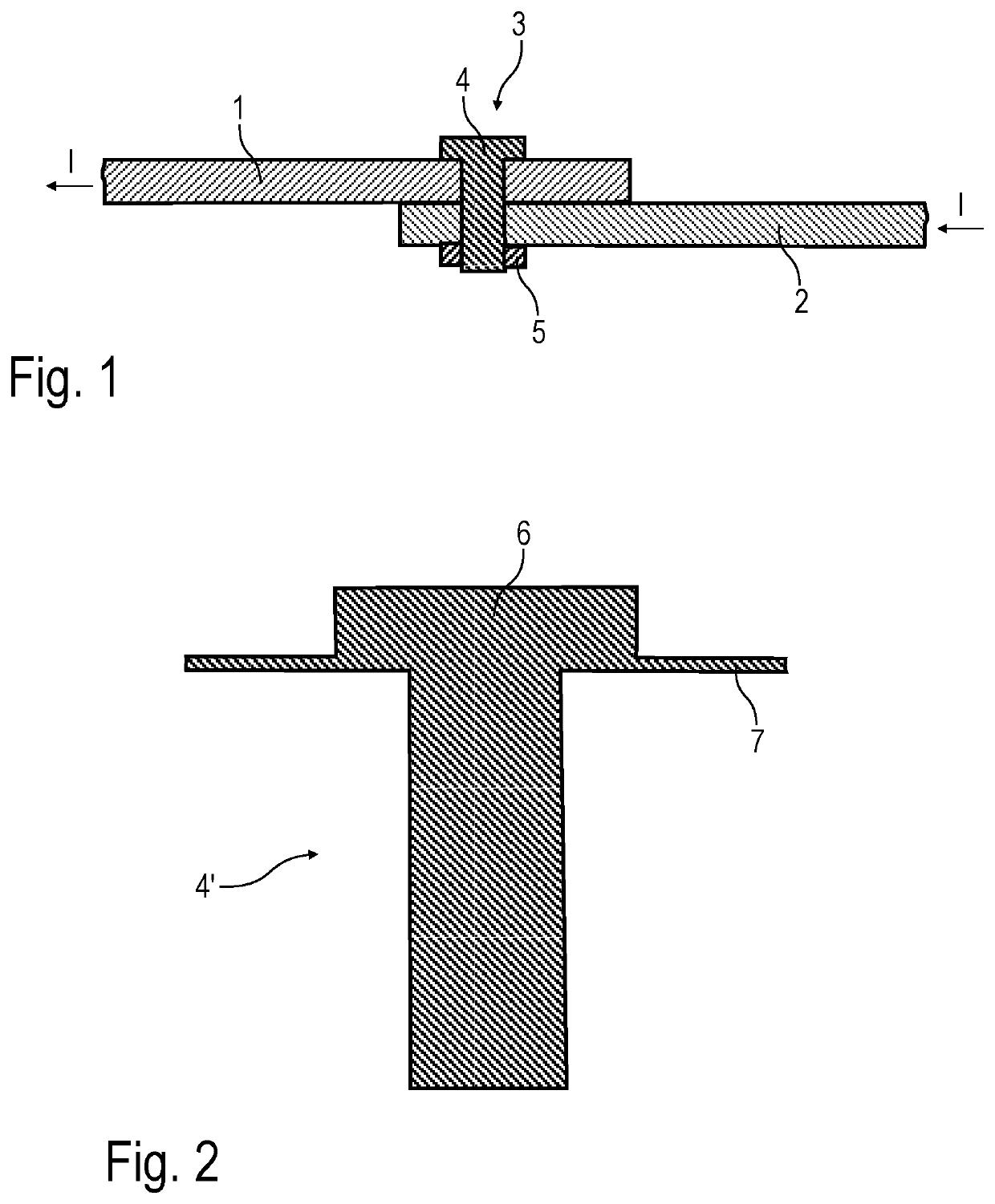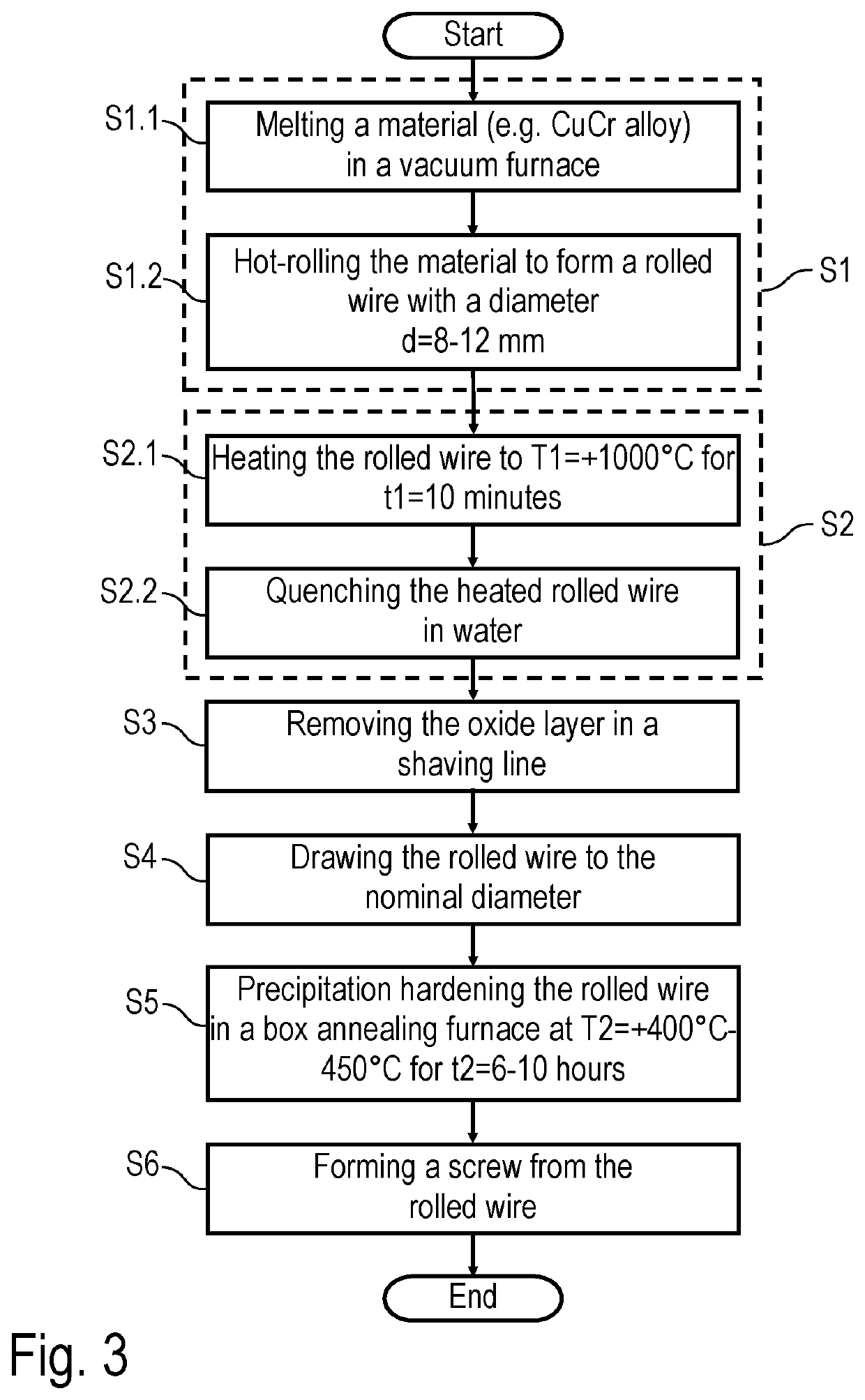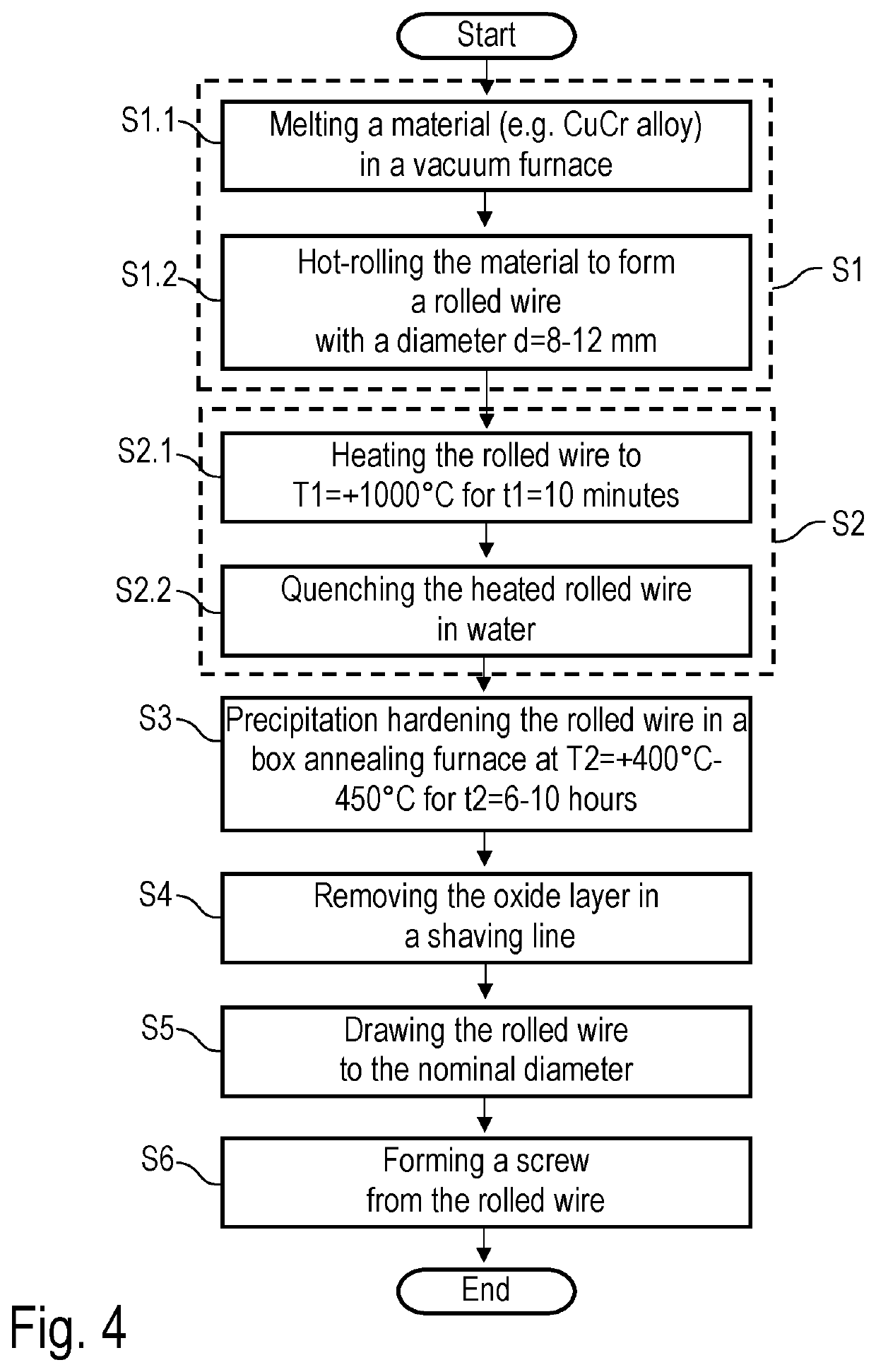Connecting element, in particular screw or nut
a technology of connecting elements and screws, applied in the direction of screws, threaded fasteners, bolts, etc., can solve the problems of contradictory target requirements, however, and achieve the effect of increasing the mechanical strength of the alloy and deformation of metallic materials
- Summary
- Abstract
- Description
- Claims
- Application Information
AI Technical Summary
Benefits of technology
Problems solved by technology
Method used
Image
Examples
Embodiment Construction
[0048]FIG. 1 shows a schematic representation of a conductor-bar arrangement according to the invention with two conductor bars 1, 2 made of copper, the two conductor bars 1, 2 lying with their free ends in plan-parallel manner one on another and being electrically and mechanically connected together by a screw connection 3.
[0049]The screw connection 3 in this case consists of a screw 4 according to the invention with a correspondingly adapted nut 5.
[0050]The screw 4 and the nut 5 in this case consist of a special material which combines a high mechanical tensile strength of at least 350 MPa with a high electrical conductivity of at least 50% IACS. With regard to the concrete composition of the material of the screw 4 and the nut 5, there are various possibilities, some variants of which will be described in detail below.
[0051]FIG. 2 shows a modification of a screw 4′ with a screw head 6 with a formed-on disc 7, the disc 7 increasing the contact surface of the screw head 6 by more t...
PUM
| Property | Measurement | Unit |
|---|---|---|
| mechanical tensile strength | aaaaa | aaaaa |
| mechanical tensile strength | aaaaa | aaaaa |
| yield strength | aaaaa | aaaaa |
Abstract
Description
Claims
Application Information
 Login to View More
Login to View More - R&D
- Intellectual Property
- Life Sciences
- Materials
- Tech Scout
- Unparalleled Data Quality
- Higher Quality Content
- 60% Fewer Hallucinations
Browse by: Latest US Patents, China's latest patents, Technical Efficacy Thesaurus, Application Domain, Technology Topic, Popular Technical Reports.
© 2025 PatSnap. All rights reserved.Legal|Privacy policy|Modern Slavery Act Transparency Statement|Sitemap|About US| Contact US: help@patsnap.com



